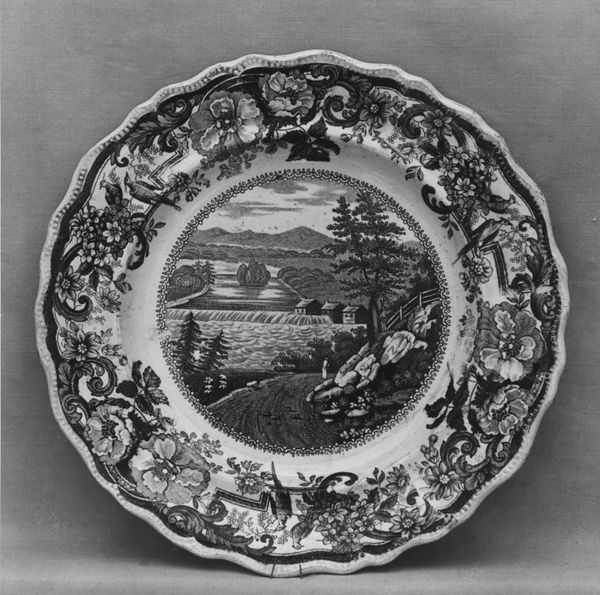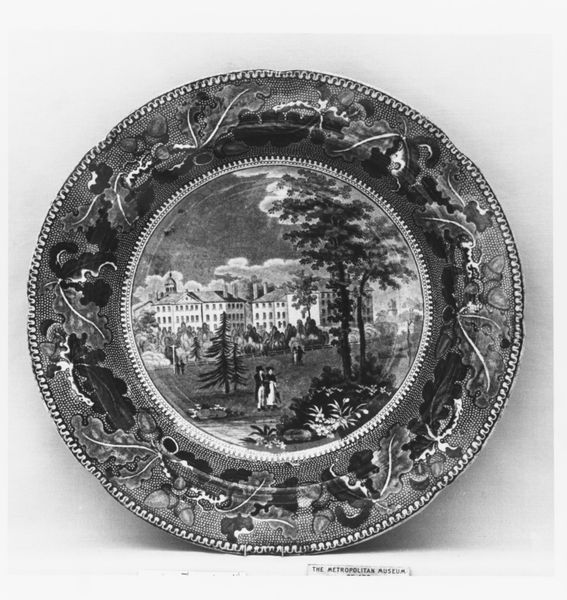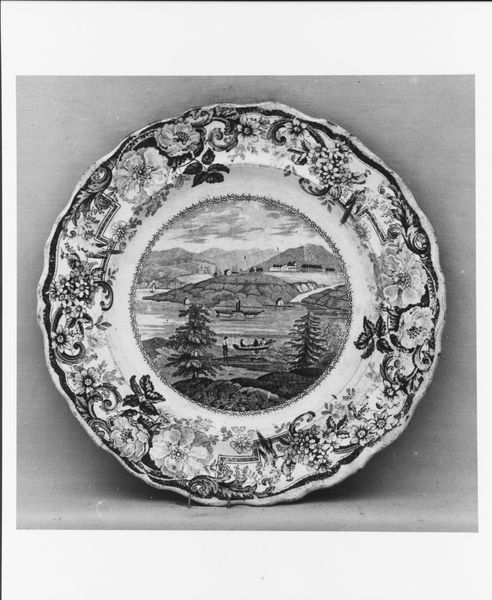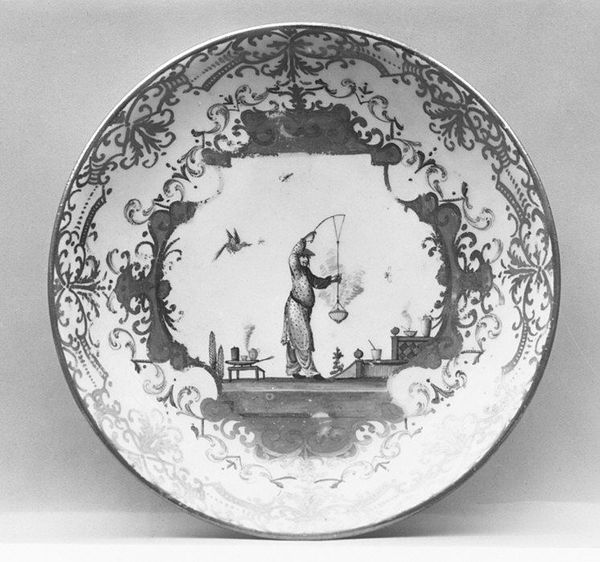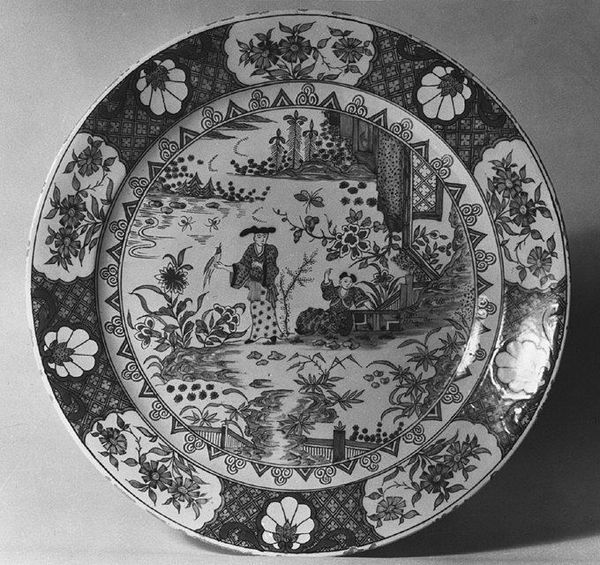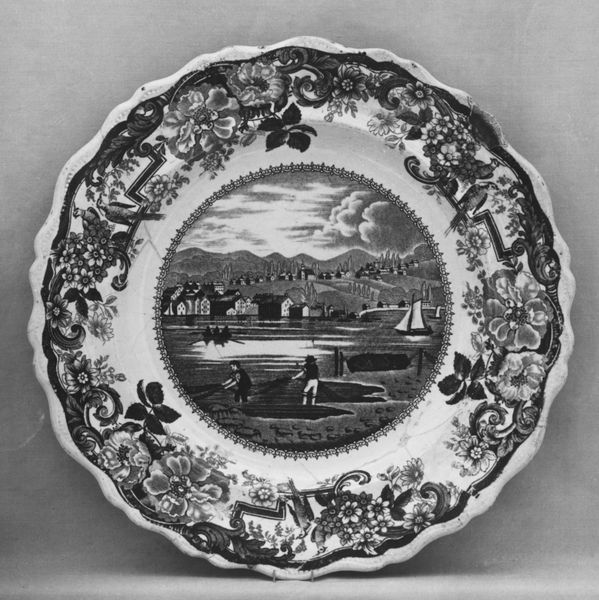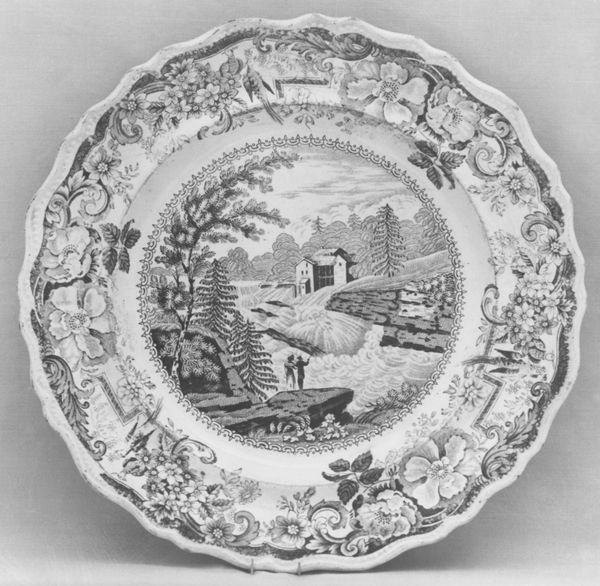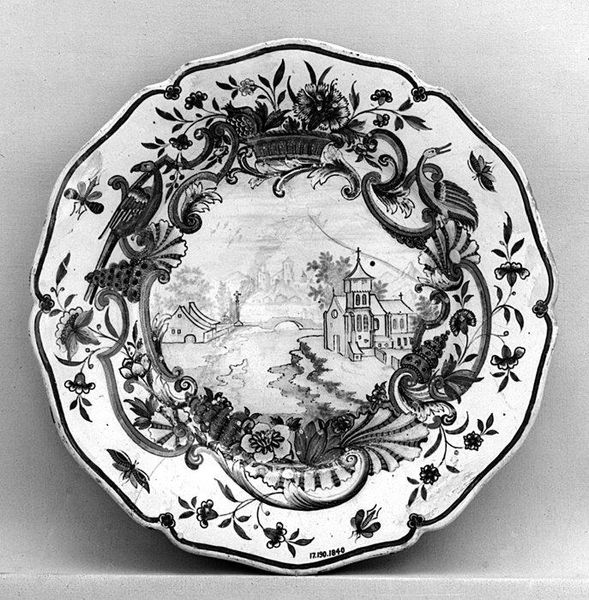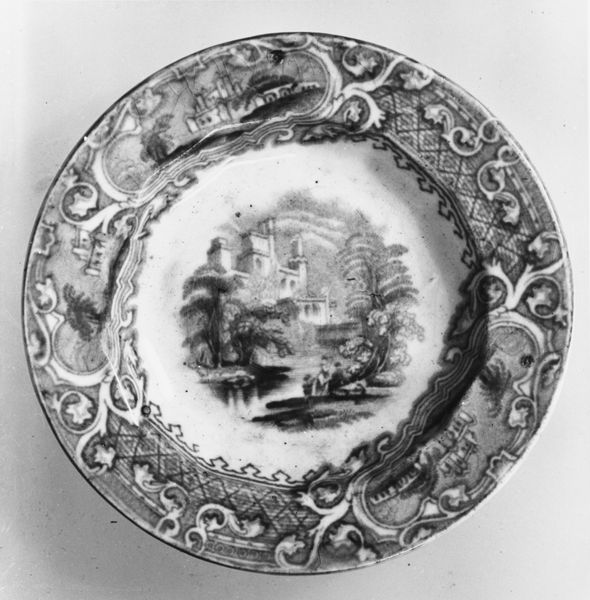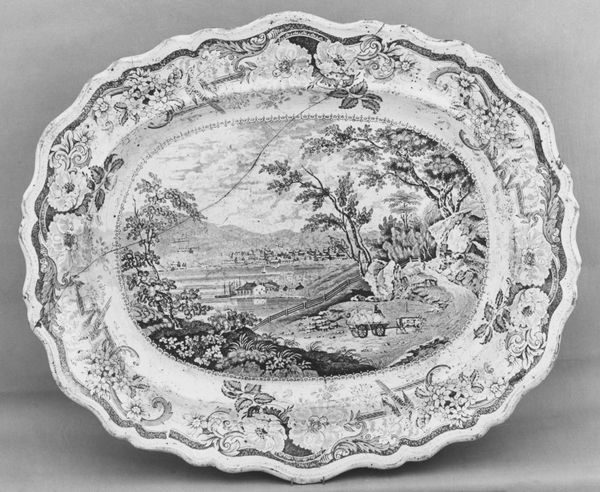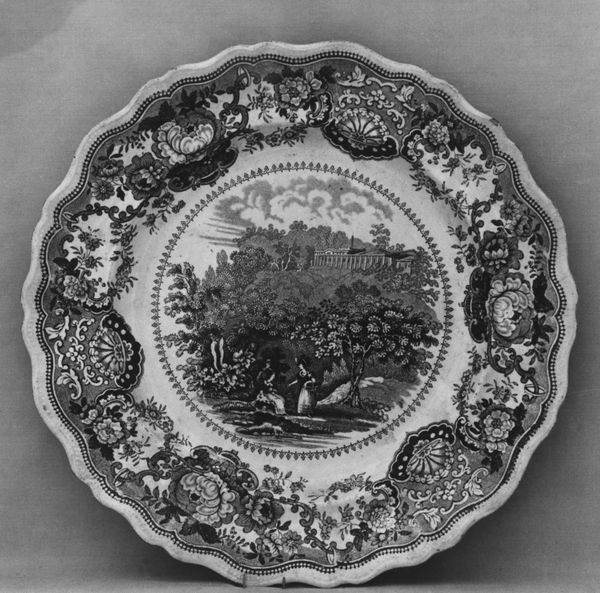
painting, ceramic, earthenware
#
neoclassicism
#
painting
#
sculpture
#
landscape
#
ceramic
#
earthenware
#
black and white
Dimensions: Diam. 8 7/8 in. (22.5 cm)
Copyright: Public Domain
Editor: So, this earthenware plate, "Plate", made sometime between 1821 and 1839, by Joseph Stubbs… it’s striking how a seemingly domestic object displays this detailed landscape. What can we unpack from it? Curator: Think about the context in which this plate was produced. Earthenware was relatively cheap. This means we're looking at mass production, bringing idealized landscapes into ordinary homes, democratizing art, you might say. What does the black-and-white coloring suggest about its means of production? Editor: It looks like it was possibly printed on it, like an early transferware... a cheaper process for sure. So the plate is not just about the scene, but about how it got there and who could afford it. What’s the significance of using this medium for depicting that landscape? Curator: Exactly! The very act of eating off this plate puts one in relation to that idyllic scenery and perhaps the social class it represents. The process is key: consider the labor, the industrial techniques that made such widespread consumption possible. Doesn't the choice of Neoclassical scenery reflect the aspirations of the rising middle class? Editor: I see what you mean. The plate is less about high art and more about the intersection of industry, aspiration, and everyday life. A way of consuming not just food, but also culture. Curator: Precisely. The materiality speaks volumes about the intended audience and the socioeconomic forces at play. Editor: So much to consider in a simple plate! Thanks, I'll definitely look at art with different eyes from now on. Curator: Remember, it’s about questioning who made it, how, and for whom, always keeping material conditions in sight.
Comments
No comments
Be the first to comment and join the conversation on the ultimate creative platform.
